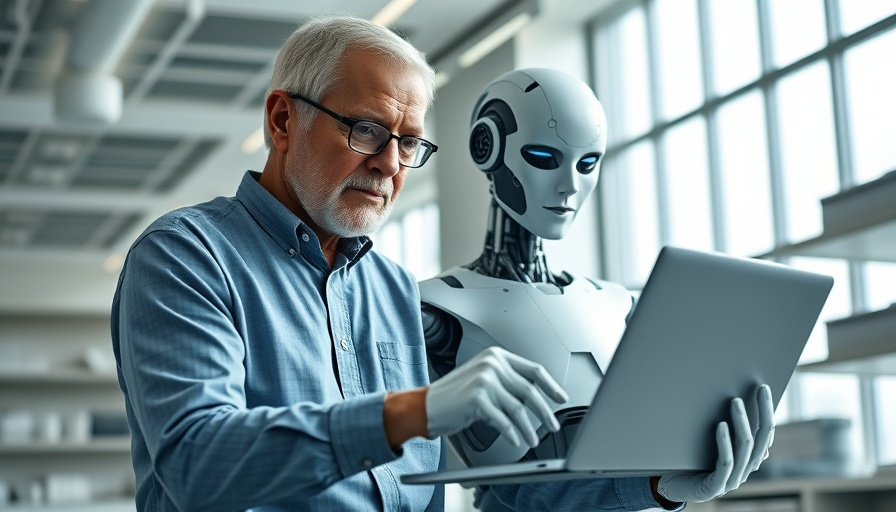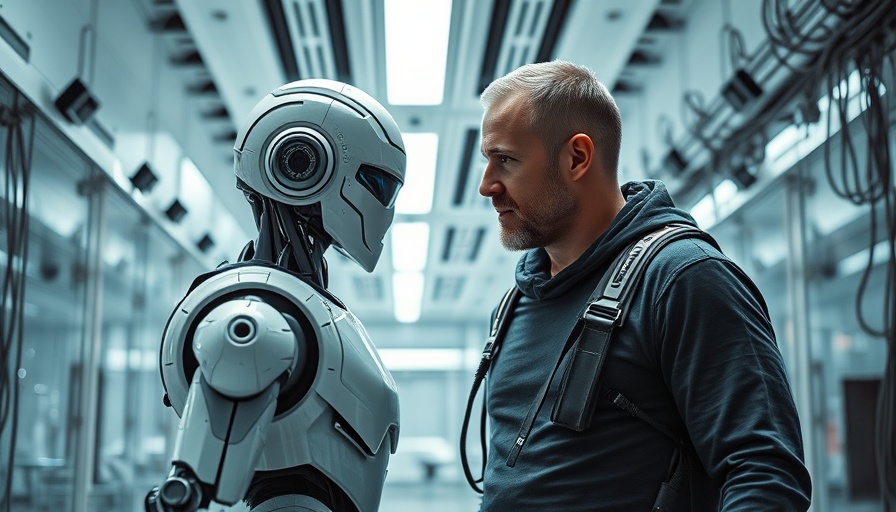
The New Frontiers of Robotic Intelligence
In recent developments that are reshaping the landscape of robotics, Boston Dynamics has unveiled an innovative perception system that enhances its humanoid robot, Atlas. This tech not only elevates Atlas's operational accuracy but also prepares it for complex tasks in real-world settings, such as manufacturing. The perception system allows Atlas to adjust dynamically to its environment, enabling it to continue its tasks even with interruptions or changes in its workspace. This move signifies a monumental leap towards what experts refer to as 'athletic intelligence,' where robots are expected to perform effortlessly and purposefully in unpredictable conditions.
In 'Boston Dynamics Just Dropped a NEW ATLAS That Actually Thinks,' the discussion dives into the latest advancements in AI robotics, exploring key insights that sparked deeper analysis on our end.
The Implications for Business Owners
For business owners, the ramifications of such advancements are clear: the integration of AI and robotics could substantially streamline operations, improve efficiency, and reduce labor costs. With robots like Atlas potentially being able to handle intricate tasks—such as sorting and transporting parts in a warehouse—businesses may find their labor needs evolving. The initial investment in AI robotics might be steep, yet the long-term benefits of increased productivity and reduced human error can lead to significant cost savings.
Open Source Bots and Democratizing Robotics
Another player in this field, Hugging Face, has introduced open-source bots like Hope Jr and Reichi Mini, making advanced robotics more accessible to developers everywhere. With a more affordable price tag compared to traditional counterparts, these open-source options encourage innovation, allowing small businesses and startups to implement AI marketing software into their operational framework. This democratization of technology is poised to redefine how companies leverage AI for competitive advantages.
A Glimpse into the Future: Trends and Predictions
The burgeoning sector of humanoid robots is not just about enhancing existing capabilities; it’s indicative of a trend towards a fully integrated AI ecosystem. Industry experts predict that sectors such as manufacturing, logistics, and even hospitality could see a significant influx of AI-powered systems capable of supporting human workers or even taking on roles traditionally held by them. Given the current trajectory, a trillion-dollar market in humanoid robotics may soon materialize, with clients racing to adopt these technologies.
Counterarguments: The Limits of Robotics
While robots like Atlas and Star One display impressive abilities, some counterarguments highlight the limits of current technology in replacing human workers. Critics argue that the nuanced decision-making, emotional intelligence, and adaptability of humans cannot be replicated by machines, at least not in the near term. Despite their advancements, robots still rely heavily on programming and, as such, should be viewed as complementary tools rather than outright replacements for human labor.
Concluding Thoughts: The Call to Action
The dialogue surrounding robots in the workplace raises an important question for business owners: are you ready to embrace AI technologies to enhance your operations? Staying informed and adapting to these innovations could ensure a competitive edge in the evolving market landscape. If you are considering making a leap into the future, GET YOUR OWN AI ASSISTANT, as these tools could be the key to unlocking unprecedented growth and efficiency in your business.
 Add Row
Add Row  Add
Add 




Write A Comment